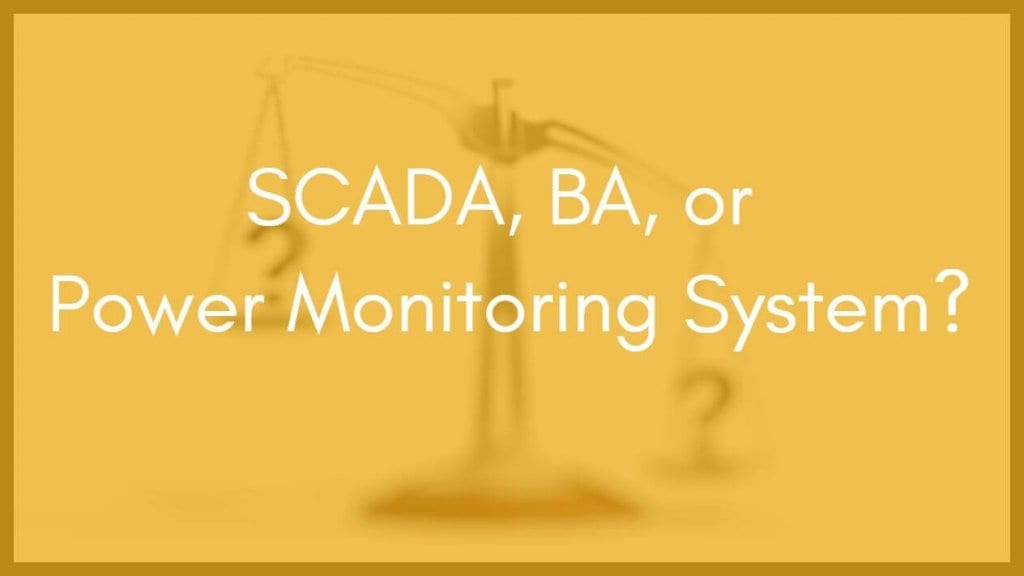Skip the difficult customization of SCADA or BA and proactively find facility inefficiencies with a power monitoring system.
By: Allan Evora
This article was originally posted on Automation World: https://www.automationworld.com/5-reasons-consider-power-monitoring-system
A power monitoring system provides an easy way to automatically retrieve and analyze power quality events. Unlike building automation software which typically counts the number of events, a power monitoring system extracts event forensics. And unlike software that comes bundled with power quality meters, a power monitoring system automatically raises a flag to mark significant events with the potential to cause damage within your facility.
Here are 5 more reasons you might want to think about a power monitoring system.

1. If you’ve experienced premature failure of key equipment within your facility.
A power monitoring system can act as your crystal ball to clarify if your motors, pumps, transformers, control devices, or any electrical-type equipment are susceptible to premature failure. If they fail earlier than predicted, you can investigate the possible causes, such as:
- harmonics that cause excessive heat in transformer windings.
- transients that cause micro-jogging and motor vibration in motor bearings.
- transients that cause cable insultation to heat and wear, resulting in short circuits.
If your power quality issues might shorten your published mean time between failure statistics, wouldn’t you want to mitigate those events to ensure your equipment lasts as long as the OEM outlined?
2. If you’ve had nuisance tripping or unexplained resetting of control devices.
Do you have a PLC or distributed control system that automatically resets or cycles power? Do you have a circuit breaker that trips for no apparent reason? Nuisance tripping can negatively affect your facility, ruin the quality of a manufactured product, or even cause an emergency power supply system to come online during a non-emergency.
Undervoltage is one of the biggest culprits behind nuisance tripping. If you’ve had voltage fall below IEEE standards (i.e., 10% for a period of time), it will often cause the equipment’s power supply to reset.
The other common cause of resetting and tripping are harmonics. This is typically the case when a circuit breaker opens and there are no forensic traces behind why it tripped.
3. If reliable clean power is critical to facility operations or personnel safety.
Facilities where power is critical to operation must understand the current status of any critical power components. By interfacing to the generator control system, UPS system, and normal electrical distribution equipment using a power monitoring system, you can ensure no equipment is overloaded or has alarms/faults present. You can also track UPS run hours and the number of times a particular piece of equipment has turned off and on.
Gaining visibility into reliability metrics allows you to increase equipment lifespan and decrease maintenance costs.
4. If you wish to automate emergency power supply system (EPSS) reporting for compliance purposes.
Most SCADA systems provided by EPSS OEM (e.g., Russelectric, ASCO), are centered around real-time monitoring, alarming, and setpoint adjustment. The ability for those systems to automate testing and reporting of transfer switches and generators is often not included.
Not only can a power monitoring solution schedule tests, evaluate results, and automatically generate reports for distribution, it saves an organization numerous manhours each month.
Any event that causes ATSs or generators to operate can potentially satisfy your monthly NFPA 110 test requirement. However, if you don’t have an automated system always watching these assets, you’ll miss that opportunity.
5. If you want to allocate costs with a complicated electric rate schedule.
In facilities with electric rate structures that require on-peak/off-peak time of use, peak demand charges, power factor penalties, or even real-time pricing, most automation solutions don’t have the capability to handle complex cost allocation calculations.
A power monitoring solution can. For example, an industrial facility’s peak demand charges may be larger than the energy charge. Software that detects when the plant is at its peak demand and then maps each cost center’s contribution makes the allocation of energy costs more accurate.
Manage everything in one place
Not only does a power monitoring system, such as Schneider Electric’s Power Monitoring Expert or equivalent automatically collect data, it also provides an extensive library of templates and reports to guide you through data analysis.
An owner using a power monitoring system has a simple way of proactively identifying facility inefficiencies and major contributors to energy use without going through a difficult customization program in SCADA or building automation.
Allan D. Evora
Allan D. Evora is a leading expert in control systems integration and has worked in every capacity of the power and energy management project lifecycle. With over 25+ years of industry experience, he has worked at Boeing Company and General Electric before establishing Affinity Energy, Charlotte, NC in 2002. Allan is an alumnus of Syracuse University with a B.S. in Aerospace Engineering, a graduate of the NC State Energy Management program, and qualified as a Certified Measurement & Verification Professional (CMVP).
Throughout his career, Allan has demonstrated his passion for providing innovative solutions. In 1990, he developed FIRST (Fast InfraRed Signature Technique), a primary design software tool used to rapidly assess rotary craft infrared signatures. In 2008, Allan was instrumental in developing Affinity Energy's Utilitrend, a commercially available, cloud-based utility resource trending, tracking, and reporting software.
Additionally, Allan has been instrumental in large-scale integration projects for energy companies and mission critical facilities, such as data centers, hospitals, airports, and manufacturing. He has worked with SCADA systems since the early '90s and has a passion for instrumentation, controls, and actionable information, which drives him to incorporate openness, simplicity, and integrity into every design.

